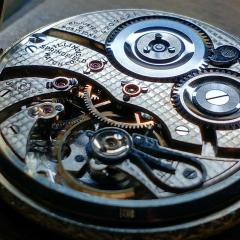Universal Geneve 1-42 / Cleaning without trouble?
-
Recently Browsing
- No registered users viewing this page.
-
Topics
-
Posts
-
By DonEilenberger · Posted
Sorry to reopen a necro-thread (long dormant) - I have a Seiko Kinetic 5M42A that needs at least one coil, possibly both. Anyone know of any sources? The usual fallback of eBay has failed me - there are people selling coils, but not the ones for this movement (which was apparently a very popular movement, used in Seiko and Pulsa branded watches.) The coil numbers are: 4002 516, and 4002 519 I'd also love to find a source for spares of the screws used all over this movement - they're Seiko PN 0022 247 Thanks! (Moderator - if this should be a new thread, please do feel free to tell me, or drag this one into a new thread.) Don Eilenberger -
Hi a read what you told me but a still can't understand how to tell what way do you mean when you said the shape example?
-
I didn't take it apart until after you kindly explained its function! In fact mine doesn't work exactly the same way as described in the link OH provided in that it's not the whole block that moves but just the internal spring & its support. However, the 'franken-spring' I've cobbled together pending the right one turning up is, it seems, too thick to slip through the join in the two halves of the block as the mechanism is activated....
-
By Neverenoughwatches · Posted
I love these boxes, fantastic for spares, mostly Indian, chinese and Russian but exactly as you say scott, you only need to pick out a couple of pieces and they've paid for themselves.








Recommended Posts